Snowdrop flower is a hardy perennial, winter flowering plant.
Many times, these flowers are heralded as the first sign of spring.
Moreover, snowdrop flowers tend to bloom as early as January and February whatever the weather, they will push through the frozen, snow-covered ground.
Though they are popular for their small, white bell-shaped flowers, there is an amazing range of snowdrops you can grow.
You can collect different varieties featuring flowers in different sizes with different makings, color changes, and a number of petals.
If you are a beginner, a snowdrop is a snowdrop, however to an expert, it makes a significant difference.
Keep on reading to learn more.
Snowdrop Flower
As the name suggests, snowdrops Glanthus nivalis are often the first spring flowers that bloom.
This cheerful bulb plant tends to need almost no maintenance or fuss, as you can grow it in different spots in your yard.
Moreover, it is not bothered by pests or diseases.
Snowdrops are related to the Amaryllis bulbs, Hippeastrum that Northerns tend to force into flower in winter, and are also related to daffodils, Narcissus.
Depending on the region you live in, these plants appear in February or March, often while the snow blankets are still on the ground.
Thus, their botanical name is Glanthus nivalis: The genus name refers to the white flowers in which gala is Green for ‘milk, anthos is Greek for ‘flower’.
While navalis is Latin for ‘snow covered’.
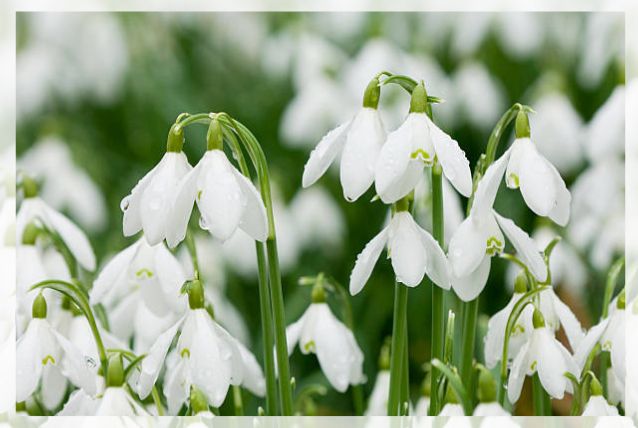
It is important to note that snowdrops are tiny plants about 3 to 6 inches tall.
They produce one small white, bell-shaped flower which hangs off the end of the green, lifeless stalk-like ‘drop’ prior to opening.
When the blooms appear, the outer petal arch to over three inner petals and the flower nods its head’ down to the ground.
Furthermore, the greyish-green leaves are shaped like narrow blades, that grows about 4 inches long.
It is important to note that snowdrops are toxic to both animals and humans, where this is a concern, you can consider the ones that are not toxic.
However, where this is no concern, it is a benefit, which means snowdrops are virtually immune from being eaten by pests.
Learn more about Poisonous Plants for Pets here.
Quick Facts about Snowdrop Flower
Some quick facts about a snowdrop flower are:
| Common Names | Snowdrops, common snowdrop. The more poetic “fair maids of February” and “Candlemas bells” both refer to the plant’s emergence in February in some zones. |
| Botanical Name | Galanthus nivalis |
| Family | Amaryllidaceae (Amaryllis) |
| Plant Type | Perennial bulb (hardy in the North) |
| Mature Size | 3 to 6 inches tall |
| Sun Exposure | Full sun to partial shade |
| Soil Type | Loamy, sandy, humusy, well-drained |
| Soil pH | Acidic, neutral, alkaline |
| Bloom Time | Early spring |
| Flower Color | White |
| Hardiness Zones | 3 to 7, USA |
| Native Areas | Western Asia and Eastern Europe |
| Toxicity | Toxic to people, pets |
Let more about Pet-Friendly Gardens! here.
Snowdrop Flower Care
You will need to plant snowdrop bulbs 3 inches deep in the soil that you have thoroughly loosened before the plantation.
The thin end of the bulb should be facing up.
Add a bulb fertilizer when you plant this flower to give it an optimal start.
Planting time ranges from early fall to late fall depending on where you are living.
Do not buy the bulbs too far ahead of time as they can dry out and lose viability if you leave them lying around for too long.
Moreover, make sure to space bulbs 3 to 4 inches apart.
After the plant emerges and flowers in the spring, allow the foliage to yellow or brown before removing it or letting it decompose returning nutrients to the soil.
This will allow the plant to store the maximum amount of nutrients in the bulb, which in turn, will keep it healthy and make sure there is good flowering next year.
If you leave it alone, the foliage will disappear by late spring or summer as the bulbs go dormant.
To remind yourself that the bulbs of snowdrops remain underground in the space, mark them with a plant label so that you do not disturb them.
As small plants tend to need good drainage, snowdrops are well-suited for a rock garden.
There they will provide some early-season interest.
Moreover, they are also a natural choice for woodland gardens and moon gardens, where the flower flowers will help brighten the evening garden.
You can mix snowdrop flowers with other plants that tend to flower early in the spring, several of which make excellent companion plants for snowdrops in a woodland or rock garden:
- Glory-of-the-snow bulbs (Chionodoxa): Light pink, blue, lavender, or white flowers; zones 4 to 9
- Crocus bulbs (Crocus spp.): Purple, lavender, orange, yellow, blue, white, and cream flowers; zones 3 to 8 (typically)
- Winter aconite bulbs (Eranthis hyemalis): Bright yellow flowers; zones 3 to 7
- Adonis flowers (Adonis amurensis ‘Fukujukai’): Yellow flowers; zones 3 to 7; not a bulb but a perennial
Light and Soil Requirments
Snowdrop flowers tend to thrive in sunlight and enjoy the full sun with an average of 6 or more hours of direct sunlight each day.
However, as they bloom so early in the spring, you will need to provide them with enough sunlight and it is often not a problem.
They tend to flower before trees like maple and oak which have a chance to leaf out and cast shade.
Moreover, one of the benefits of having to grow snowdrops is that you can plant in under large spaces, like deciduous trees, that partially shade spaces where most other plants often struggle to grow well.
You will need to row snowdrop flowers in loose, well-draining soil that has plenty of humus.
Just like most bulbs, they will not thrive in heavy clay soils.
Water, Temperature, and other Requirments
Snowdrop flowers will not need particularly moist soil in cooler climates, however, in warmer climates, they will need more water.
These plants do not like to thrive in heat and humidity.
This is why they are often not grown out of zone 7.
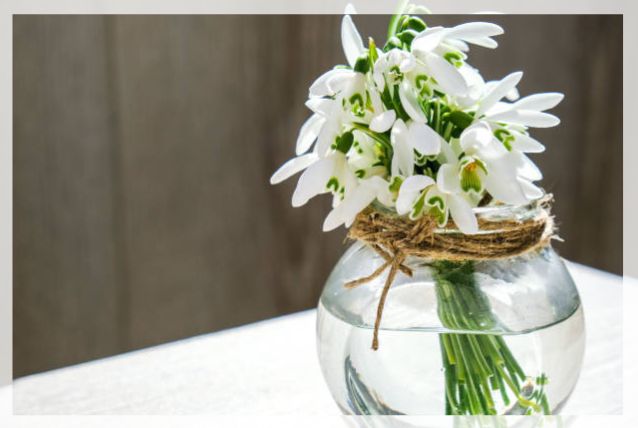
At the southern end of their range, the bulbs can lose vigor over time, and they are better suited to the North.
This is where they are cold-hardy as far up as zone 8.
You can add a bulb fertilizer at the time of plantation to help boost your snowdrops to a good start.
A late fall addition of compost will help provide nutritional needs for the bloom next year.
Types of Snowdrops
Plants in the genus of Leucojum genes are so similar to those in the Glanthus genus that gardeners often consider the two genera together.
Some of the examples that are hardy to zone 4 are Galanthus nivalis being slightly hardier than the rest.
All except Leucojum aestivum tend to bloom in early spring:
- Galanthus elwesii’Ginal Snowdrop‘ grows to be as twice as tall as Galanthus nivalis, and is hardy to zone 4.
- Galanthus nivalis’Floroa Pleno’ tends to have double flowers
- Leucojum vernum, a plant of about the same size as the giant snowdrop (1 foot tall), is called the “spring snowflake.” It blooms in early spring and is hardy to zone 4.
- Leucojum aestivum bears the common name of “summer snowflake.” It is of a similar size to L. vernum. It blooms a little later than the rest (in mid-spring) and is hardy to zone 4.
- Galanthus nivalis ‘Viride Apic’ has prominent green marking on its petals.
This is how snowflakes differ from snowdrops.
Whereas the three outer petals of Galanthus tend to be larger than the three inner petals, all six of the flower petals in the Leucojum genus, however, are the same length.
Moreover, the flowering stem of a summer snowflake is likely to bear more flowers, up to six.
Whereas you often find just one bloom or occasionally two on the flowering stem of the spring snowflake.
Pruning, Propagation, and Overwintering Tips
It is important to note that you should not prune the snowdrop.
Neither trim the foliage nor deadhead the spent flowers of this plant.
The entire plant tends to die back above the round when it is ready to go dormant.
This is the one reason why snowdrops are low maintenance.
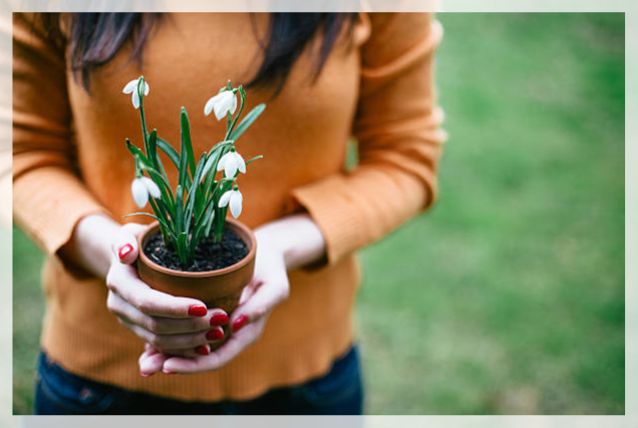
Moreover, this plant comes up every year and can multiply and spread over time.
In fact, they frequently naturalize.
You can take advantage of this to lift and divide the bulbs when to intend to propagate snowdrops.
As long as your garden is within the range of zones 3 to 7, you do not need to do anything special to overwinter snowdrops.
These plants are cold-hardy and tend to survive entirely on their own.
Growing Snowdrops from Seeds and Bloom
Though you can grow snowdrops from seeds, it is not worth bothering and hardly anybody does it.
It is important to note that most consumers almost always begin their plant patch by buying bulbs, that are readily available at home improvement centers in the fall.
Moreover, the bulbs are far too inexpensive to justify buying the seed instead, and expending time and energy will need you to start a new plant from seed.
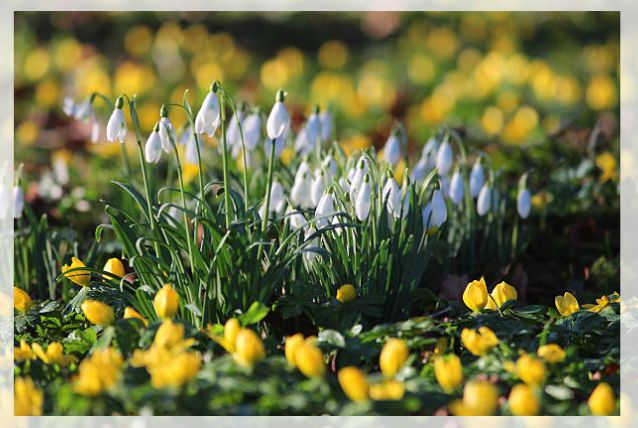
Once the patch starts, under the right conditions, snowdrop flowers will spread on their win by self-seeding.
Also, ants can help disseminate the seeds of these plants as well.
Snowdrop flower tends to spread on their own via bulb offsets.
Unlike some plants, like Wisteria, that can be fussy bloomers, you do not need to take additional steps to get snowdrops to bloom.
You simply need to provide them with the above growing conditions.
Common Problems
It is important to note that snowdrops do not have a serious disease or pest problems.
However, there are a few things that you should remember when growing them.
These include:
Toxicity: These plants are toxic to both humans, and pets like cats and dogs.
Therefore, avoid letting your kids or pets come in contact with any parts of the plants, and do not eat them.
Moles: Moles tend to be carnivores and will not eat the bulbs of your plant.
However, while they have no nefarious designs upon your bulbs, they can dislodge them in pursuit of insects, etc, that are present underground.
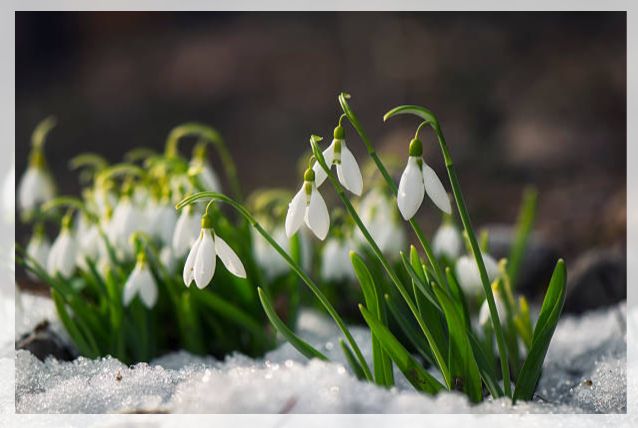





Leave a Reply